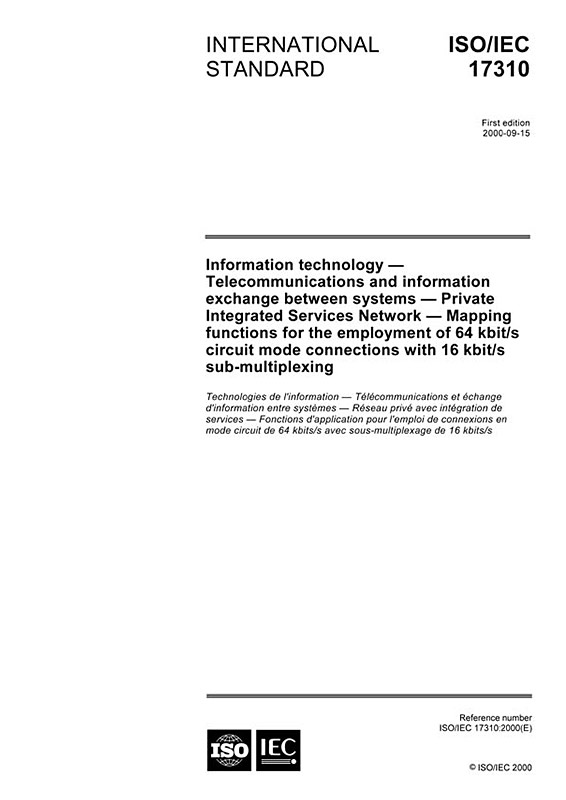ISO/IEC 17310:2000
Information technology - Telecommunications and information exchange between systems - Private Integrated Services Network - Mapping functions for the employment of 64 kbit/s circuit mode connections with 16 kbit/s sub-multiplexing
Ausgabedatum:
2000-10
Edition:
1.0
Sprache: EN - englisch
Seitenzahl: 10 VDE-Artnr.: 212971
This International Standard defines the mapping functions in exchanges of Private Integrated Services Networks (PISNs)
required for the utilization of scenarios in which 64 kbit/s circuit mode connections are sub-multiplexed into 4 x 16 kbit/s
channels for carrying inter-PINX signalling and user information.
NOTE 1 - This International Standard has been prepared to meet the specific needs of an application for a particular user organisation.
However, it may also be applicable elsewhere. The requirements contained in this International Standard will be incorporated in any future
standard specifying a more generic approach to bearer conditioning.
In order to connect a Private Integrated Services Network Exchange (PINX) to another PINX, mapping functions are required
to adapt the specific interfaces at the C reference point to the application at the Q reference point. As such, mapping functions
provide for physical adaptation to the interface at the C reference point. Mapping functions also provide for the mapping of
user channels and signalling information at the Q reference point to the appropriate channels or timeslots at the C reference
point.
The C and Q reference points are defined in ISO/IEC 11579-1.
The type of interface at the C reference point covered by this International Standard is the 64 kbit/s Unrestricted Digital Leased
Line (D64U) Terminal Equipment Interface, in accordance with ITU-T Rec. G.703.
At the Q reference point the mapping provides a 16 kbit/s service for user channels to support the transfer of unrestricted
digital information and to support the transfer of speech, and a packet mode service for the signalling channel. The applied
mapping is a static mapping, i.e. there is a fixed relationship between user and signalling channels at the Q reference point and
the interface at the C reference point.
Management functions relating to failure management are outside the scope of this International Standard.
This International Standard is applicable to PINXs that can be interconnected to form a Private Integrated Services Network
(PISN) and that support signalling protocols at the Q reference point.


